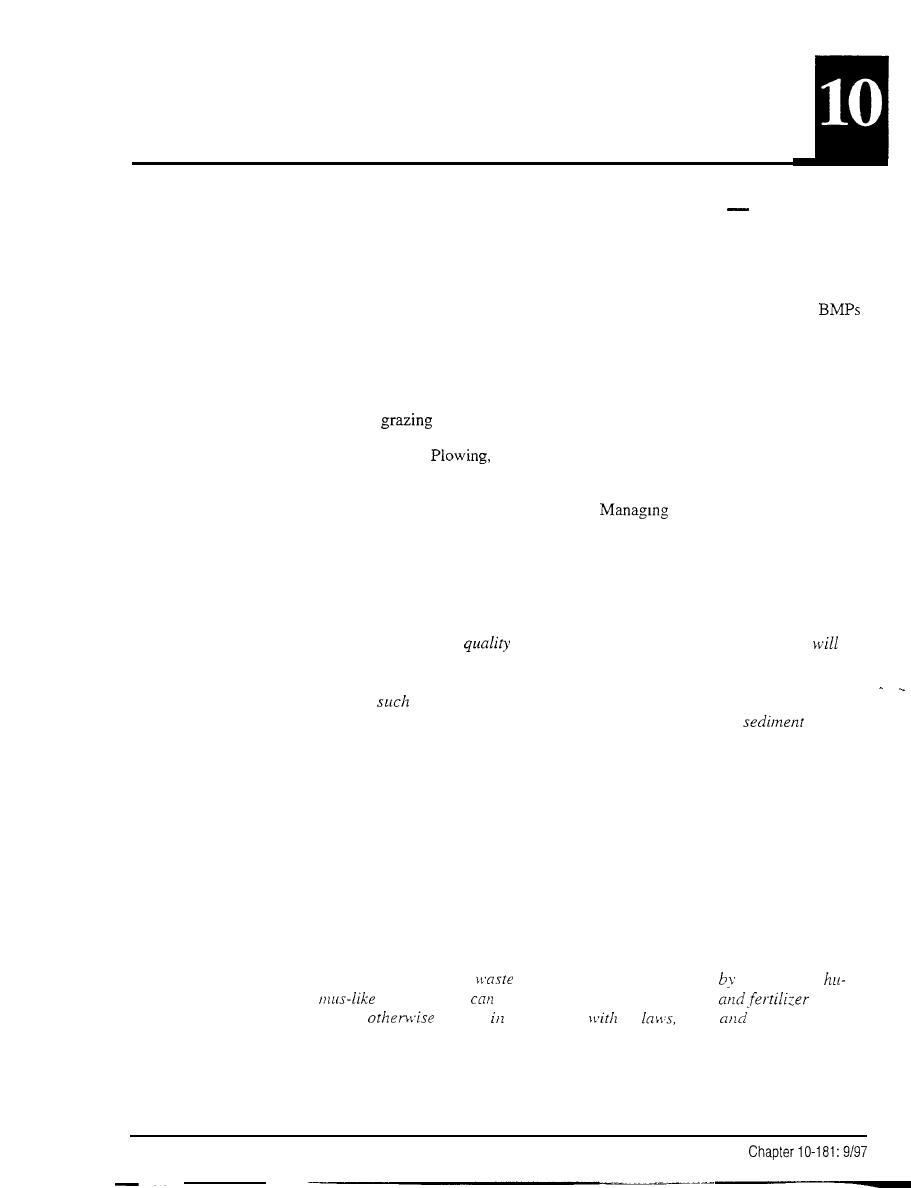
Appendix
Appendix A: Best Management Practices
Definitions
and Descriptions
Best management practices mentioned in this guidance are listed in alphabetical
order below. The NRCS or other code number, if any, is given for each BMP,
followed by a short definition. Additional explanatory text about selected
is presented in italicized text below the practice, code, and definition.
Access Road (560): A travelway constructed as part of a conservation plan.
Animal Trails and Walkways (575): A livestock trail or walkway constructed to
improve
distribution and access to forage and water.
Bedding (310):
blading, or otherwise elevating the surface of flat land
into a series of broad, low ridges separated by shallow, parallel channels
Brush (and Weed) Management (314):
and manipulating stands of
brush (and weeds) on range, pasture, and recreation and wildlife areas by me-
chanical, chemical, or biological means or by prescribed burning. (Includes re-
ducing excess brush (and weeds) to restore natural plant community balance and
manipulating stands of undesirable plants through selective and patterned treat-
ments to meet specific needs of the land and objectives of the land user.)
Improved vegetation
and the decrease in runofffrom the practice
reduce the amount of erosion and sediment yield. Improved vegetative cover acts
as a filter strip to trap the movement of dissolved and sediment attached sub-
stances,
as nutrients and chemicals from entering downstream water
courses. Mechanical brush management may initially increase
yields
because of soil disturbances and reduced vegetative cover. This is temporary
until revegetation occurs.
Channel Vegetation (322): Establishing and maintaining adequate plants on
channel banks, berms, spoil, and associated areas.
Chiseling and Subsoiling (324): Loosening the soil, without inverting and with
a minimum of mixing of the surface soil, to shatter restrictive layers below nor-
mal plow depth that inhibit water movement or root development.
organic material.
organic material biologically
producing a
The purpose is to treat
material that
be recycled as a soil amendment
substi-
tute or
utilized compliance
all
rules.
regulations.



 Previous Page
Previous Page
